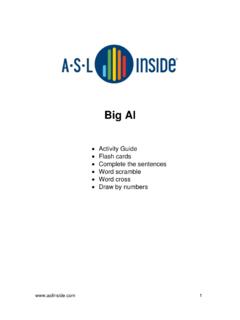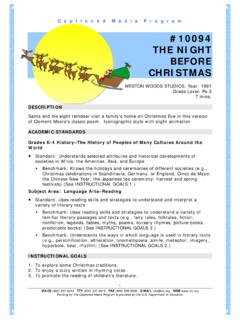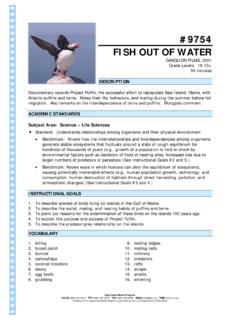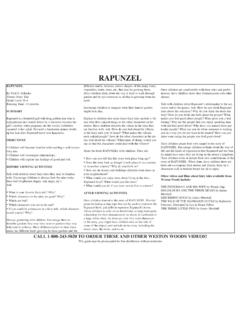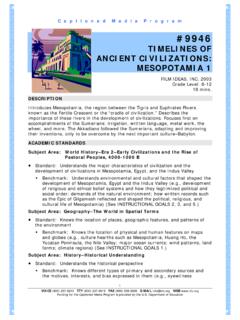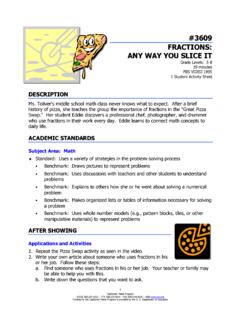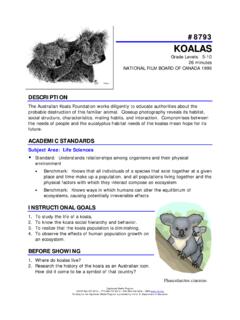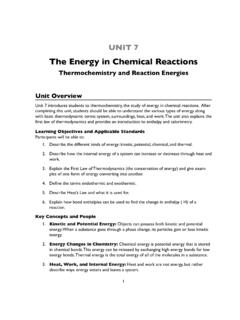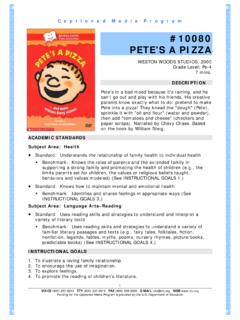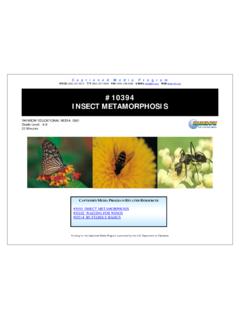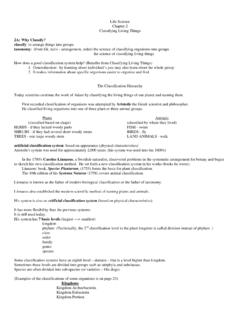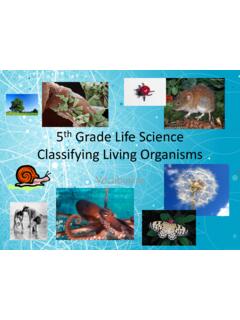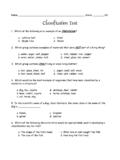Transcription of #10467 THE CLASSIFICATION OF LIVING THINGS
1 C a p t i o n e d M e d i a P r o g r a m VOICE (800) 237-6213 TTY (800) 237-6819 FAX (800) 538-5636 E-MAIL WEB #10467 THE CLASSIFICATION OF LIVING THINGS HUMAN RELATIONS MEDIA, INC., 2003 Grade Level: 5-10 20 Minutes 22 Instructional Graphics Included Funding for the Captioned Media Program is provided by the Department of Education CAPTIONED MEDIA PROGRAM RELATED RESOURCES #9360 PROTISTS#9470 VIRUSES AND MONERANEXECUTIVE PRODUCER Anson W. Schloat PRODUCER Cochran Communications VIDEO SCRIPT WRITER Peter Cochran TEACHER'S RESOURCE BOOK B.
2 Ellen Friedman, E. Friedman Consulting Copyright 2003 Human Relations Media, Inc. Introduction Learning Objectives Program Summary National Science Education Content Standards Teaching Strategies Activity Notes 1. Key Concepts 2. Invent Your Own CLASSIFICATION Scheme 3. Biological CLASSIFICATION 4. Technology and CLASSIFICATION 5. Evolution and CLASSIFICATION 6. Cell Structure 7. The Five Kingdoms 8. Fungi 9. Hierarchy 10. Genus and Species 1 1. Dinosaurs 12. What's in a Name? 13. Building the Hierarchy from the Top Down 14.
3 Building the Taxonomy for Humans 15. Hyrax and Elephant 16. Scientific versus Common Names 17. Endospores 18. Domains 19. Comparisons of Biological Relationships 20. Extinction 2 1. Connections: Evolution of Immunity 22. Virtual Field Trip 1. Glossary of Terms 37 2. Suggested Reading 3 9 3. Internet Resources 40 Other Biology Programs from Human Relations Media 4 1 What makes a fish be a fish? Why is a sunflower a sunflower and not a rose? Bats and birds and dragonflies all take to the air, but they are in very different CLASSIFICATION groups.
4 Why? Biological CLASSIFICATION is a complex but fundamental part of the study of LIVING THINGS -and it can be exciting. It reveals the history of life on Earth by acknowledging the evolutionary relationships between different species. It is a story that continues to be written as new evidence makes our account more accurate. Building a meaningful biological CLASSIFICATION system requires a lot of knowledge of biology and its basic concepts. Using a CLASSIFICATION system can be an effective way to teach many of those concepts.
5 What ideas does the word " CLASSIFICATION " conjure for you and your students? All too often, people connect CLASSIFICATION with a task of memorizing a list of names, but this is misleading. The science of biological CLASSIFICATION is an active area of research, and the names are much more than just an arbitrary list. Instead, they are labels that tell us about the unique characteristics of an organism. The labels also show how an organism is related to other species, and its path of descent from ancient ancestors.
6 That is one reason that CLASSIFICATION assignments continue to change. As we know more, we can do a better job of grouping organisms in a meaningful way. New technologies continue to expand and modify our CLASSIFICATION system. For example, DNA technology has provided valuable data for testing and correlating assumptions about relationships that are built on structural or physiological data. The changes in biological CLASSIFICATION help to make the scheme become a more accurate description of evolutionary relationships.
7 The CLASSIFICATION scheme is a human-based system to organize what we know about a set of real relationships. As species continue to evolve, even the relationships change-but at a very slow rate. Students need to understand CLASSIFICATION more than to memorize dozens of labels and names. No one can hold all this knowledge in their head-indeed, it is even difficult to record it in print or online for all organisms. Students must start by understanding the significance of CLASSIFICATION , learning a few examples so that they have something to work with, and being aware of the ongoing process of research in CLASSIFICATION and taxonomy.
8 How can you make this topic appealing for students? The video program The CLASSIFICATION of LIVING THINGS brings to life the topic of CLASSIFICATION for your students. Colorful images catch their attention. The narrative line opens the idea of CLASSIFICATION as a meaningful scientific investigation. Students begin to see the structure of the system overall. They begin to see that scientific names tell them something about the organism in question. With the help of the video and teaching guide exercises, students will come to understand the meaning behind the biological CLASSIFICATION system.
9 You can use this program to wake up student interest in the topic and to provide a lively but solid foundation of understanding. After viewing the video program The CLASSIFICATION of LIVING THINGS and using the student worksheets and exercises in this Teacher's Resource Book, your students should be able to: describe the significance of biological CLASSIFICATION be aware that taxonomic distinctions reflect evolution explain the criteria on which classifications are based recognize genus and species names report on the five biological kingdoms diagram the relationship between the five kingdoms and the larger taxa known as domains provide examples of taxonomic groups understand how new technologies and discoveries change our view of CLASSIFICATION carry out a CLASSIFICATION exercise A fast-paced
10 Visual collage of LIVING THINGS provides an enticing entry into the program The CLASSIFICATION of LIVING THINGS . This rich array of biological images reflects the enormously diverse world of LIVING THINGS and the enormous task of identifying and organizing them for study. Students immediately see the challenge of meaningful organization in an opening story that takes place in a grocery store. In this particular store, items have been arranged at random. Right away, students have a familiar example that connects to their own experience: they can easily relate to how difficult a shopping task would be if grocery stock were not arranged in a logical way.
